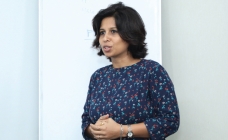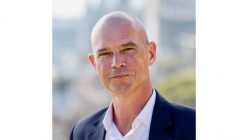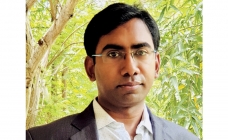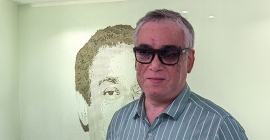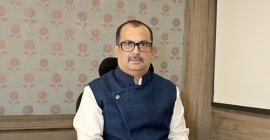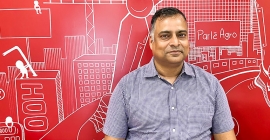‘Leveraging IoT For OOH’
By Rajiv Raghunath - May 17, 2021
Robert Lim, Regional Business Development Manager of DFRC, an independent R&D SME offering data technologies for OOH, provides an overview of the company’s offerings for OOH advertising. DFRC’s LBASense sensors, when placed on media assets, capture data on footfall count per week over a campaign period, people traffic patterns in an OOH Zone, etc.
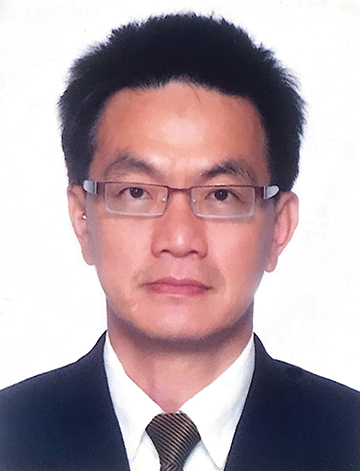 Data Fusion Research Centre (DFRC), an independent R&D SME having offices in Korea Singapore and Switzerland, is extending its data technologies for application in OOH business. DFRC’s LBASense technology is employed to estimate footfall in a designated area, computing dwell time and mobility patterns based on the mobile phone probing signals. That is, LBASense sensors are installed in the “observation zones” to passively detect and analyse smart mobile signals, transmitted over WiFi, not capturing any personal data, e.g mobile number. The big data collection over Wi-Fi capture only MAC address, the digital signature of the smart devices. This solution is PDPA compliance. LBASense technology is currently deployed in 59 cities around the world.
Data Fusion Research Centre (DFRC), an independent R&D SME having offices in Korea Singapore and Switzerland, is extending its data technologies for application in OOH business. DFRC’s LBASense technology is employed to estimate footfall in a designated area, computing dwell time and mobility patterns based on the mobile phone probing signals. That is, LBASense sensors are installed in the “observation zones” to passively detect and analyse smart mobile signals, transmitted over WiFi, not capturing any personal data, e.g mobile number. The big data collection over Wi-Fi capture only MAC address, the digital signature of the smart devices. This solution is PDPA compliance. LBASense technology is currently deployed in 59 cities around the world.
DFRC provides crowd analytics covering large areas for smart cities, shopping malls, outdoor events, smart offices, etc. Robert Lim, Regional Business Development Manager, DFRC based in Singapore provides an overview of the company’s offerings for OOH advertising, in an interview to Rajiv Raghunath. The LBASense sensors are placed on the media assets. Reports generated from the data capture include footfall count per week over a campaign period, people traffic patterns in an OOH Zone or at a billboard site (weekday/weekend), traffic patterns that vary from one sensor to another sensor, peak time in a day during weekdays and weekends, etc. Edited excerpts of the interview:
OOH advertising business in most markets are constrained by lack of robust audience data for effective OOH monitoring systems. Do you see DFRC being able to address this market need, and if yes, what is your proposition to the OOH industry on this count? Please mention what are the true differentiators when it comes to your offerings to the advertising business.
OOH advertising is mainly about location. Advertising located in a prime location is much more valuable than an advertisement located in places where the audience number is insignificant.
Currently, advertisers are using survey data in order to measure the quality of a location, which is not accurate and not trusted by the advertisers.
The DFRC solution, using IoT Wifi sensors, is a transparent, highly accurate method to track the audience data which could be shared with the advertisers in order to gain trust and to measure the real impact of OOH advertising.
DFRC provides crowd analytics. Would you say that the DFRC crowd analytics is a game-changer, and how?
The difference between DFRC crowd analytics and existing solutions is in the accuracy. Our sensors can be calibrated from between 0.5 meters to 500 meters and provides real time information for crowd analytics within this range 24 hours a day, which no other system can do.
This information can be used together with AI and big data analytics to profile the audience, understand the audience behaviour of each location and thereby optimise the advertising campaigns.
Furthermore, for campaigns that are targeting an action from the customers, we are offering a unique method to measure the conversion rate of the OOH billboards and a reliable and quantified independent method to measure the return of investment in OOH advertising.
This solution brings the measurements tools that are available today in the online world into the break and mortar world.
Do you see scope for your offerings in the area of smart, interactive digital OOH space, where the media assets are also capable of data capture?
In addition to the crowd analytic solutions, we are offering interactive solutions that allow OOH advertisers to use the billboard as an interactive media hub, allowing consumers to connect directly to the billboard and receive additional information including a method for direct order, directly from the sensors located on the site.
This capability allows for better O2O interaction and when implemented, dramatically increases the effectiveness of interactive advertising.
Have you been engaged in OOH projects? Would you be looking at business opportunities in an emerging market like India?
DFRC has performed hundreds of OOH projects all over the world including projects in Portugal, Spain, Korea, Singapore, UK, Switzerland, Thailand and European countries.
For emerging markets like India, we recommend using our system in the form of a survey, where the sensors are relocated every few weeks to new locations, to contain and reduce the cost of measurements per billboard.
According to our experience in other countries, crowd analytics data collected during one-month provides a reasonable trade-off between system accuracy and cost.
Using this kind of data collection method, a small number of sensors (e.g. 100 sensors) will be able to cover more than 1,000 billboards in one year.
What is the level of investment required to deploy DFRC systems for audience data capture and media monitoring?
The level of investment is mainly dependent on the existing infrastructure available on a site. The estimated cost per system is between USD1,500 for a sensor powered by electricity to USD3,500 per a system that is fully independent and powered by solar panels.
All systems are weather protected (IP67) and designed to work in the Indian weather conditions.
The DFRC IoT Wi-Fi sensor could be housed in a waterproof box and easy to install and relocate. A power point is a must for all installation.
Snapshot of select DFRC projects handled in different sectors
- I. Tourism: Bologna, Italy
Analyse the nationalities of international tourists as well as their footfall and behaviour patterns, to offer better targeted services. (10 outdoor sensors used)
- II. Tourism: Milyang Region, South Korea
Analyse the tourist mobility patterns amount the main tourist attractions of Milyang region. (3 outdoor sensors used)
- III. Tourism: Sagrada Familia, Spain
Analyse the footfall, nationality and mobility patterns of tourists around and in one of Barcelona's most famous monuments, La Sagrada Familia, in July 2016, in partnership with Barcelona Turisme. (10 outdoor sensors used)
- IV. Open Data: Cluj-Napoca, Romania
To provide Open Data (free) to the Municipality of Cluj-Napoca. Crowd Analytics data provided are: hourly and daily footfall over 7 regions, duration of stay, returning visitors’ ratio and mobility. (7 outdoor sensors used)
- V. Artbox: Singapore
Analyse the crowd’s footfall and mobility during the two week-ends of the Artbox free outdoor pop-up market in Singapore, in April 2017 and Mai 2018, with a special focus on behaviour patterns and social media listening (2018). (1 sensor deployed in 2017; 4 sensors in 2018)
- Music Concert: Tel Aviv, Israel
Analyse the crowd's use of public transportation systems by deploying sensors at the train station next to the concert venue in May 2016, in partnership with Israel Railways. (3 outdoor sensors used)

Stay on top of OOH media trends

